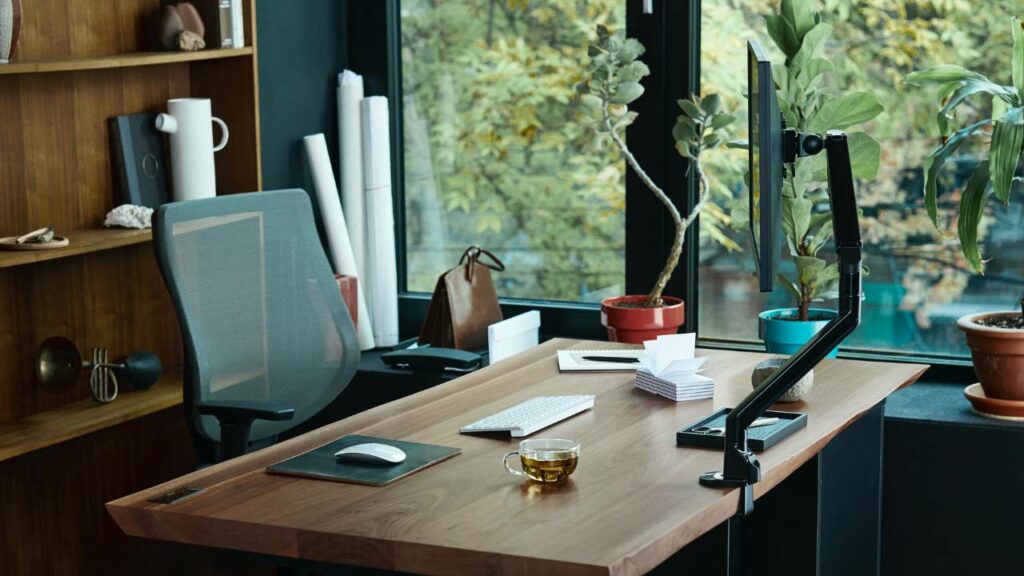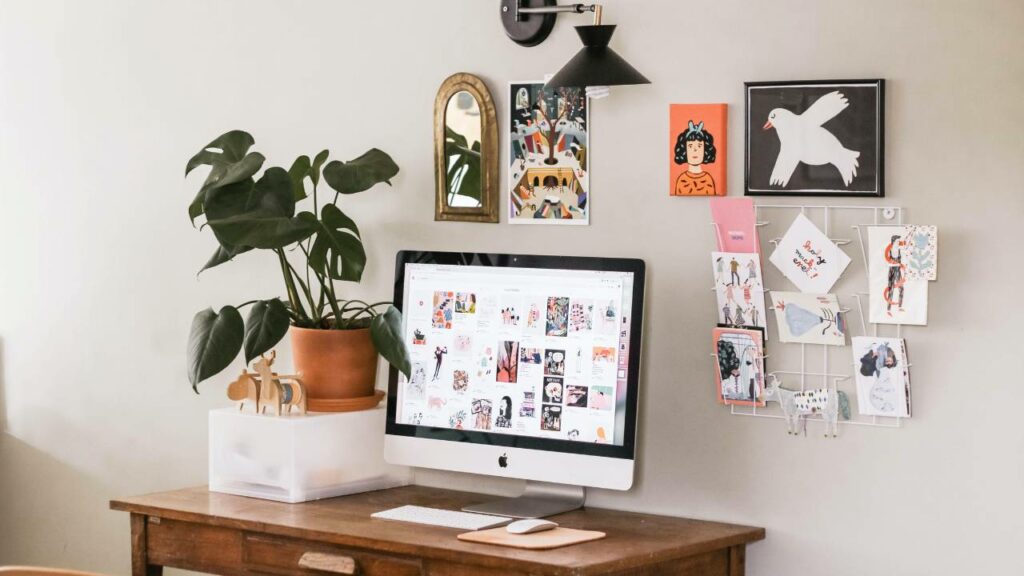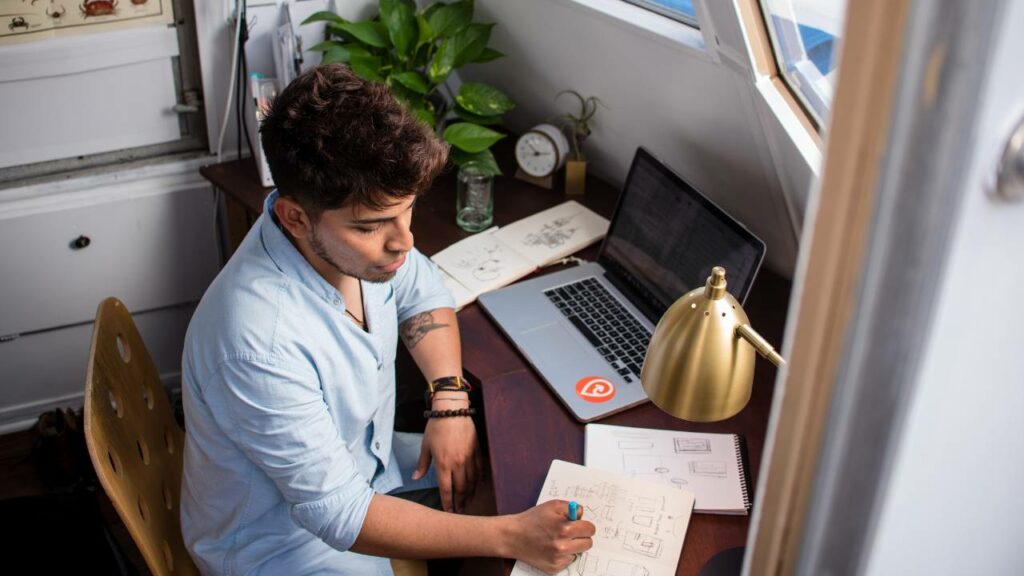How to Craft a Functional Home Office Space
Creating a functional home office space is an essential factor in boosting your productivity while working from home. As remote working becomes increasingly popular, it’s important to craft a dedicated space that allows you to focus on your tasks without distractions. We will explore some tips and tricks to help you design an effective home office that suits your individual needs.
Determining the Right Location
Obtaining the Permission
Before settling on a location for your home office, ensure that you have the necessary home office planning permission if you plan to make any structural changes to your space. Consult with local authorities to confirm any zoning or permit requirements. This will save you time, money and future headaches.
Evaluating Light and Windows
A crucial part of choosing the right location for your home office is the availability of natural light. Natural light is vital for reducing eye strain and boosting your mood. Ideally, your office should have at least one large window allowing plenty of sunlight to enter the room. If your preferred location is lacking in light, consider adding artificial lighting solutions, such as desk lamps or floor lamps to compensate.
Evaluate the direction the windows face. South-facing windows will provide plenty of daylight throughout the day, and north-facing windows create a more consistent, diffused light.
Choosing Between Bedroom and Guest Room
Deciding between a bedroom and guest room for your home office depends on the size, layout, and personal preference. Here are some points to consider:
- Bedroom: If you plan to convert a bedroom into a home office, be mindful of the potential impact on your sleep pattern. The association between work and sleep can make it difficult to switch off at night. However, if space is limited, creating a dual-purpose room with a foldaway bed can be a practical solution.
- Guest Room: A guest room can make an excellent location for a home office. It combines functionality while maintaining the ability to accommodate guests in the remaining space. If the room is spacious enough, consider dedicating one corner for office activities and the other for hosting visitors.
Designing for Functionality and Comfort

Selecting the Perfect Desk
When setting up your home office, the cornerstone of comfort and function is choosing the right desk. Consider whether a traditional or a standing desk best suits your needs. A standing desk can help improve posture and reduce physical discomfort in the long run. However, if you prefer the traditional way, opt for a spacious desk that offers plenty of legroom and room for your peripherals. Keep in mind the importance of storage, such as drawers and shelves, which can greatly enhance the functionality of your workspace.
Choosing an Ergonomic Chair
Your office chair plays a crucial role in maintaining comfort throughout the workday. Ergonomic design is vital in preventing strain and promoting productivity. Shoot for a chair that possesses the following features:
- Adjustable seat height
- Seat depth flexibility
- Lumbar support
- Breathable materials
- Swivelling and rolling capabilities
Optimising for Productivity
To create a workspace that maximises productivity, focus on these elements:
- Lighting: Make use of natural light where possible. Set your desk near a window or introduce a desk lamp to illuminate your workspace.
- Organisation: Keep your office organised by having a designated spot for everything like your stationery, documents, and gadgets. Use desk organisers and trays to help keep things tidy and within easy reach.
- Personal touches: Personalise your space with photos, artwork, or plants. This will make your home office feel more inviting and enjoyable to work in.
Storage Solutions and Organisation
When crafting a functional home office space, storage and organisation are key. No one wants their desk to be cluttered with documents, office supplies, and miscellaneous items. By incorporating effective storage solutions, you can create a workspace that is both efficient and visually appealing.
Ingenious Shelving and Cabinets
Utilising shelving and cabinets in your home office can make all the difference in keeping your workspace organised. There are countless options to fit your space and aesthetic preferences, from floating shelves to built-in cabinets. Consider the types of items you need to store, and choose your storage options accordingly. For example, if you have a lot of books and files, you might prefer tall bookshelves or cabinets with adjustable shelves. If you need to store smaller items like pens, scissors, and notepads, drawers or built-in cubbies could be a good fit.
Tip: Remember to make the most of vertical space if you’re working with a small area!
Utilising Bins and Boxes
Another effective way to keep your workspace organised is by using bins and boxes. These storage options provide a convenient place for office supplies and ensure they are out of sight when not in use. You can use a variety of materials, such as:
- Plastic bins
- Wicker or fabric baskets
- Cardboard or wooden boxes
By choosing the right style and size for your needs, you can create a coherent look for your home office and keep all your essential items within arm’s reach.
Tip: When organising your bins and boxes, try using labels or colour coding systems to further streamline your storage system and make finding items a breeze.
Personalising Your Space

Choosing Colour and Design
To create a functional and enjoyable home office space, it’s essential to personalise it with your favourite colours and design elements. Start by selecting a colour scheme that reflects your personality and supports your focus. You might consider a serene, neutral palette or go for more vibrant, energising colours. For added interest, you can experiment with an accent wall or incorporate patterns and textures to your wall space.
Adding Decorative Elements
While you don’t have to create a luxury home office, remember that a well-decorated workspace can make your environment feel more inviting and boost your productivity. One idea for personalising your space is to create a gallery wall featuring your favourite artwork, photographs, or inspiring quotes. Remember that it’s your unique space, so select pieces that resonate with you and your style.
Incorporate textures and patterns in your decor, such as decorative cushions, area rugs, or window treatments, to add warmth and character. If you have a passion for collecting items, you can also showcase your collections in your home office. Keep your items organised and neatly arranged to maintain a professional yet personalised atmosphere.
Lighting Strategies
Maximising Natural Light
Making the most of natural light in your home office is key to creating a comfortable and productive space. Here are some tips to help you maximise natural light:
- Position your desk near a window: Place your workspace close to a window to enjoy the benefits of natural light and a pleasant view, if possible.
- Use sheer curtains or blinds: Opt for light, translucent window treatments to allow more sunlight into your office without compromising your privacy.
- Incorporate mirrors: Strategically placing mirrors opposite windows can reflect and distribute natural light throughout the room, making it appear brighter.
- Choose light wall colours: Lighter colours, such as white or soft pastel shades, will reflect more light and create a brighter and more pleasant atmosphere.
Selecting Artificial Light Fixtures
In addition to natural light, a functional home office requires efficient and well-planned artificial lighting. Consider these factors when selecting light fixtures for your workspace:
- Layer your lighting: Combining different types of light fixtures can create a more versatile and adaptable environment. Your lighting setup should include ambient lighting, task lighting, and accent lighting. This way, you can adjust the brightness and focus of your workspace according to your needs.
- Choose energy-efficient technology: Opt for LED bulbs instead of traditional incandescent ones, as they provide bright light while consuming less energy. LED bulbs also last longer, saving you money on replacement costs.
- Select adjustable fixtures: Desk lamps with adjustable arms and swivelling heads allow you to direct light where it’s needed most, reducing eye strain and glare on your computer screen.
- Consider temperature and colour: Different light temperatures and colours can affect your mood and productivity. For a home office, a neutral white light is a good choice, as it promotes alertness and focus without being too harsh.
Technological Considerations
Computer and Hardware Setup
When setting up your home office, it’s essential to consider the technology and equipment you’ll need. Start by selecting a computer that meets your needs – be it a laptop or a desktop. If you opt for a desktop, ensure you invest in a quality computer screen, keyboard, and mouse.
If you’re starting your own home-based business, you may want to check if you’re eligible for any type of government support for entrepreneurs. This could make obtaining proper equipment considerably easier.
Other essential hardware to consider include:
- Printer and/or scanner
- External hard drives or cloud storage for file backup
- USB hubs and memory card readers
- Webcam and microphone for virtual meetings
- Surge protector power strips
Dealing with Wires and Connectivity
A clutter-free workspace is crucial for productivity, so it’s essential to manage your office wires and cables efficiently. Follow these simple tips:
- Choose wireless devices: Whenever possible, opt for wireless equipment like a wireless keyboard, mouse, and printer. This minimises cable clutter.
- Use cable ties and organisers: Bundle cables together using cable ties or invest in cable organisers to keep them neat and out of sight.
- Route cables strategically: Plan your cable routes along walls, under desks and use cable management trays to keep them hidden.
As for connectivity, make sure you have a reliable internet connection to handle your work tasks, virtual meetings, and online communication. Consider investing in a Wi-Fi range extender if your home office is far from the router, or use an Ethernet cable for a more stable connection.
Creative Use of Limited Space

Designing a Small Home Office
When designing your small home office, it’s essential to make the most of every available nook and cranny. Start by selecting space-saving furniture that serves multiple purposes and utilises vertical space. For instance, you can opt for a compact desk with built-in storage or a wall-mounted floating desk.
To make even better use of your room’s vertical space, add shelves above your desk. Use these shelves to organise your books, files, and decorative items, effectively reducing clutter and making your workspace more inviting. Remember to position your desk near a window to take advantage of natural light, which not only saves energy but also boosts your mood and productivity.
Here are some efficient furniture options for your small home office:
- Corner desks are perfect for utilising unused corners and maximising your work surface area.
- Folding desks allow you to fold the desk away when not in use, freeing up valuable space.
- Wall-mounted desks keep the floor area free and can be adjusted to different heights.
Dual-Purpose Dining and Living Areas
If you don’t have a dedicated room for your home office, consider turning your dining room or living area into a multi-functional workspace. A flex room is a fantastic way to create versatile spaces that serve various purposes throughout the day.
One option is to invest in a multipurpose dining table that doubles as a workstation. Choose a table with built-in storage or compartments to keep your office supplies organised and out of sight when not in use. You can also utilise a stylish rolling cart to store your essential tools and move between your office and dining spaces with ease.
Here are some practical ways to integrate a home office into your dining or living area:
- Room dividers: Use a folding screen, curtain, or bookshelf as a divider to create a private workspace within a shared living space.
- Floating shelves: Install floating shelves on the wall to store and display your office essentials without compromising the area’s aesthetic appeal.
- Invisible storage: Make use of hidden or built-in storage solutions (like an ottoman with storage) to maintain a clean and organised shared space.
Enhancing Productivity and Focus
Boosting your productivity and focus are essential for a functional home office space. In this section, we’ll explore how you can organise your documents and supplies and create a clutter-free environment to maximise your efficiency.
Organising Documents and Supplies
One of the things that can significantly affect your productivity is having a disorganised workspace. To enhance your efficiency, organise your documents and office supplies in an orderly manner using the tips below:
- Use document trays or filing cabinets to sort your paperwork in relevant categories such as “To Do”, “In Progress”, or “Completed”.
- Keep your stationery and small office supplies tidy and accessible by using desk organisers or dedicated storage containers.
- Label your storage boxes, folders or drawers for quick identification of their contents, making use of a label maker or simply a pen and some stickers.
Here is a list of useful organisers that can help you maintain an orderly workspace:
- Letter tray
- File folder
- Pen holder
- Storage box
Creating a Clutter-Free Environment
A clutter-free environment is essential for maintaining focus and productivity while working from home. Keep your office space tidy by following these guidelines:
- Designate a specific spot for every item in your office. Once you’ve finished using an item, return it to its designated space immediately.
- Declutter regularly by going through your documents and supplies, discarding unnecessary items, and rearranging the items you need to keep.
- Avoid multitasking and focus on one task at a time. Having too many projects at once can make your workspace feel cluttered and lead to a decrease in efficiency.
Conclusion
Crafting a functional home office contributes significantly to your productivity and well-being. Thoughtfully consider components such as ergonomics, lighting, organisation, and design to create an ideal workspace that reflects your personality.
A well-designed home office is crucial for maintaining a healthy work-life balance, promoting concentration and motivation. Happy working!
